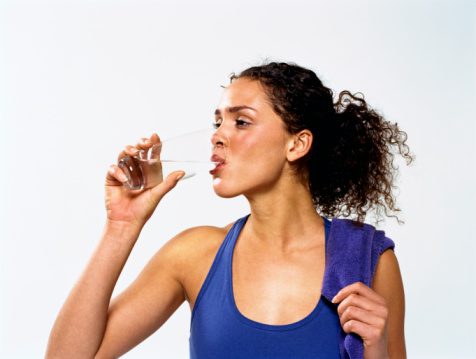Practicing Hydration and Nutrition During Indoor Sessions

Indoor training sessions designed to practice race-day routines are a great way to help athletes prepare for the challenge they will face in relatively controlled circumstances. The objective of these sessions can extend past practicing race day pacing — you can also practice race day hydration and fuelling. Although indoor training is missing some of the elements (literally) encountered in outdoor training, there still is a lot of valuable information to be gained in this controlled environment.
 Lab-monitored “sweat tests” are available that can help you determine how much sweat you lose at effort and what the composition of your sweat is. This is the most scientific version of the generalized effort I am going to outline. Knowing the exact composition of your sweat under the lab conditions may be useful but nothing is as valuable as numerous sessions under a variety of conditions to help gain knowledge on what works best for you. These tips will be a good starting point to gather information on your own body.
Lab-monitored “sweat tests” are available that can help you determine how much sweat you lose at effort and what the composition of your sweat is. This is the most scientific version of the generalized effort I am going to outline. Knowing the exact composition of your sweat under the lab conditions may be useful but nothing is as valuable as numerous sessions under a variety of conditions to help gain knowledge on what works best for you. These tips will be a good starting point to gather information on your own body.
In general, athletes need to replace 32 ounces/1 L of fluid per hour. This general starting point represents 1 ¼ large water bottles per hour. In addition, athletes need to replace anywhere from 750-1000mg of sodium per hour. Sports drinks vary in their electrolyte concentration to calculating how much sodium is in your drink, your gels and your bars is important to determine whether you need further salt supplementation. This is a good starting point for any athlete beginning in triathlon but that number varies according to body weight, sweat rate, environmental conditions, and acclimation.
To do an at-home sweat test with race nutrition, starting with 1L of fluids, 750mg of sodium, and around 250  calories of nutrition. Weigh yourself with all of the fluids and food, in the clothes you will wear riding, then ride for one hour at race pace indoors. Weigh yourself after; the weight loss will represent how much fluid you have lost that hour. One kilogram of weight lost is one liter of fluid lost.
calories of nutrition. Weigh yourself with all of the fluids and food, in the clothes you will wear riding, then ride for one hour at race pace indoors. Weigh yourself after; the weight loss will represent how much fluid you have lost that hour. One kilogram of weight lost is one liter of fluid lost.
With this method you can get the general idea of what your sweat losses are in training and practice drinking at a rate that will help you minimize those losses. Drinking even one liter of water per hour can be challenging, especially if races are in cold weather, and one liter is not guaranteed to be enough replenishment.
Heat, humidity and convection all affect cooling on the body. Riding or running outdoors creates “convection” as air moves across the skin. Using a fan creates some convection indoors but getting the same convection cooling is difficult. The humidity will also be a factor on race day. Indoor training can create high humidity, especially as the session progresses, but it is again difficult to create exact race day conditions in this regard. Recording the conditions in the room you are training in is a start. As you make adjustments you can then start to experiment with other weather conditions outdoors and see how your body responds to hot and/or humid weather.
Doing sessions indoors to train for your upcoming race while fuelling as you would for that race is a potent combination and will give a lot of good feedback. An added bonus is consuming carbohydrates during training sessions improves your ability to recover from that session. Organizing your indoor training to include hydration and nutrition simulation is an extremely powerful training tool and can make a big difference to your race day success.

